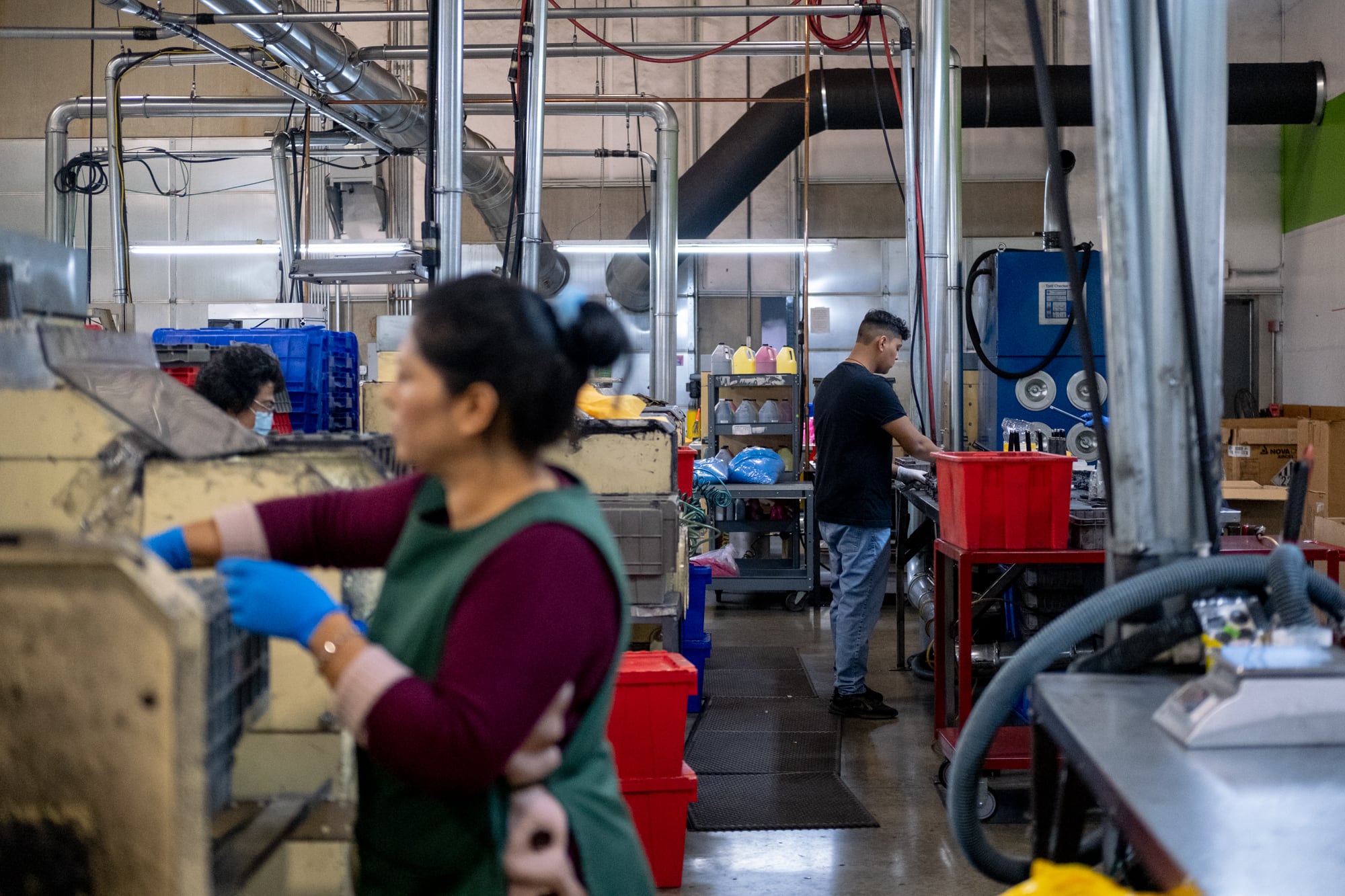What happens to students after they graduate from high school?
Schools largely don’t know. At South Bend schools, for example, officials know that fewer than half of graduates went on to college in the past two years. But they don’t follow the other 55%.
“It’s certainly harder to track,” said Rafi Nolan-Abrahamian, assistant superintendent of accountability and innovation. “And there’s less certainty in outcomes and the quality of the information you’re getting.”
That could soon change. For the first time, what students do after high school will contribute to how Indiana gauges school performance, through a new dashboard expected to launch in the fall.
How many students enlist in the military? How many of them hold steady jobs 10 years after graduation? How much money do they make?
All of those outcomes can paint a fuller picture of how well K-12 education prepares students, experts say.
But beyond tracking enrollment in Indiana colleges, finding the data is proving tricky. What state officials know so far is just a small slice of the whole story, and they haven’t yet broached how to use the limited information.
“There’s a philosophical question as well as a data accuracy question here,” said Christy Hovanetz, who focuses on school accountability as a senior policy fellow at ExcelinEd. “Should high schools be accountable for what happens to a student six years after they leave high school? … [and] how accurate of information can we gather on students six years out?”
Giving context to the data
The state cast a wide net to look at employment after high school, examining anyone with an employment record reported through unemployment insurance data.
That broad employment rate includes people who could have worked for a brief stint or made little money. But it also excludes Indiana graduates who find jobs in other states.
To attempt to better capture employment, the state also calculated a sustained employment rate and median wage that filters out short-term jobs. It focuses on those who worked for most of the year and made at least minimum wage.
The state recently published the employment outcomes, ahead of the upcoming K-12 dashboard. At first glance, the data seems to indicate that in 2020, students who graduated high school the previous year made a median income of about $22,000.
But that’s missing a lot of students.
The figure doesn’t include anyone who dropped out of high school. It doesn’t include students enrolled in Indiana colleges. It doesn’t include graduates who moved away to other states. It doesn’t include those working part time.
In fact, the median wage calculation only includes roughly 13,000 out of some 75,000 graduates — or about 18% of graduates.
So that $22,000 figure doesn’t truly represent earning prospects. It’s also hard to draw conclusions about who it does represent.
Because of the data caveats, it’s difficult to analyze trends. Do employment rates taper over time because of something happening in the labor market, or because the state can’t keep tabs on as many students?
The state will also eventually need to set goals to help people understand what a $22,000 median wage or, say, a 66% employment rate after 10 years means.
“Is that good or not?” Hovanetz said. “It’s hard for the general public specifically to make a lot of contextual sense out of it.”
Many still support collecting the data, if imperfect. State officials and policy experts say they hope the numbers spark more conversations on how schools can set students up for life after high school and perhaps fuel better data collection moving forward.
Still, Hovanetz says Indiana is ahead of the curve on connecting life outcomes to K-12 education — not just proxy indicators for how prepared a student is to be successful, but what a student actually accomplishes.
How schools can use the data
For now, the after-high school outcomes won’t be tied to the way the state grades schools.
But state officials hope the new information puts the focus on how schools prepare their students. It moves the goalpost beyond high school graduation, said Jason Callahan, Indiana’s assistant secretary of student pathways and opportunities.
“From a policy standpoint, we are really looking to move that terminal end point beyond a high school diploma, thinking about postsecondary and work-based experiences that lead to life-fulfilling careers,” Callahan said.
The numbers could help illustrate how much students could make depending on what paths they pursue after high school, he said. In trying to increase higher education attainment rates, state officials often emphasize that a credential or degree can lead to significantly larger lifetime earnings — on average, about $22,000 more per year.
Some experts caution, however, against pressuring high schools to push all students toward college and say the data needs to show how students can be successful in different ways. It’s also difficult to know whether a student’s success can be directly attributed to something a high school did.
There’s a clearer pipeline between high school and college, said Nolan-Abrahamian, the South Bend administrator. High schools tie many strategies to preparing students for college, like offering dual credit courses. But even though schools teach workforce skills, he said it’s less clear how K-12 education can improve outcomes for students who don’t go to college.
“Postsecondary enrollment is something schools have direct control over, and something they’re actively working students toward,” Nolan-Abrahamian said. But when it comes to employment or enlistment, “it’s harder to say how schools would directly plan toward those outcomes.”
Stephanie Wang covers education in Indiana, including pre-K, K-12 schools, and higher education. Chalkbeat Indiana partners with Open Campus on higher education coverage. Contact Stephanie at swang@chalkbeat.org.
Kae Petrin contributed to this story.








